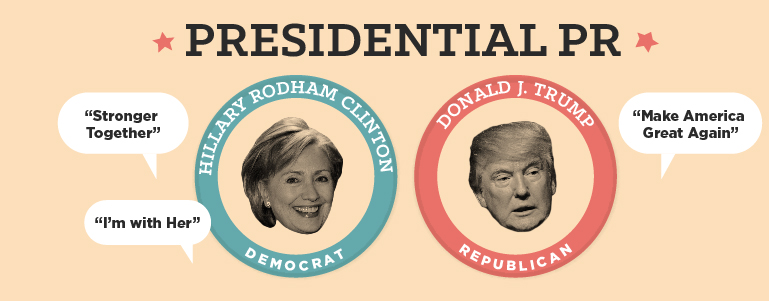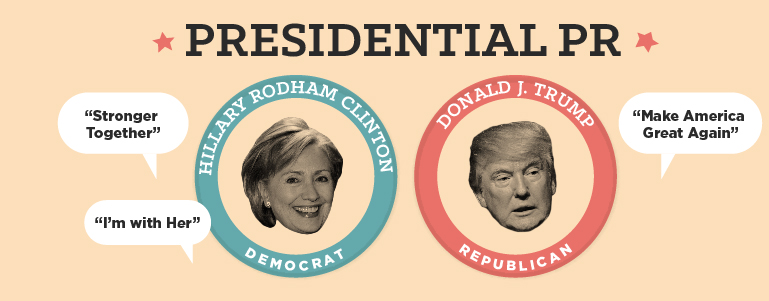175 Years of Presidential PR [Infographic]


Campaign slogans are an indelible part of U.S. presidential elections. Throughout American history, campaigns have used slogans to distill complex campaign goals into short and easily digestible messages.
Slogans historically either focus on a positive attribute of the candidate or give a glimpse of the candidate’s goals for the presidency. They are woven throughout the campaign in speeches, signs, advertisements and other writing, reinforcing the message through repetition. For example, the first slogan detailed in the infographic below, “Tippecanoe and Tyler Too,” referred to the candidate William Henry Harrison’s nickname and his choice for vice president, John Tyler.
This year, the slogans of failed 2016 contenders ranged from the simple, such as Jim Gilmore’s “For America,” to Rand Paul’s rhyming “Defeat the Washington Machine. Unleash the American Dream.” Republican Donald Trump and Democrat Hillary Clinton rose above the crowded fields of presidential hopefuls to gain their major party nominations.
Trump’s slogan “Make America Great Again” implicitly refers to a time before the presidency of Barack Obama, which he criticizes throughout his speeches. Trump has characterized the potential presidency of Clinton as a third Obama term, and contrasts that with a more successful vision of his own presidency.
Clinton’s slogan “Stronger Together” serves as an invitation to potential supporters to come together and create a stronger future. The slogan creates a foundation for messages of inclusivity and cooperation. Clinton’s secondary slogan, “I’m with Her,” serves as a reminder that she is the first female major party nominee in U.S. history.
Which historical slogan stands out as being particularly effective (or ridiculous)? Share the following infographic and let us know your thoughts.

Go to a text version of 175 Years of Winning Presidential Slogans.
Please feel free to share this graphic. When doing so, please include sourcing to “Communications@Syracuse, the online masters in communications.”


